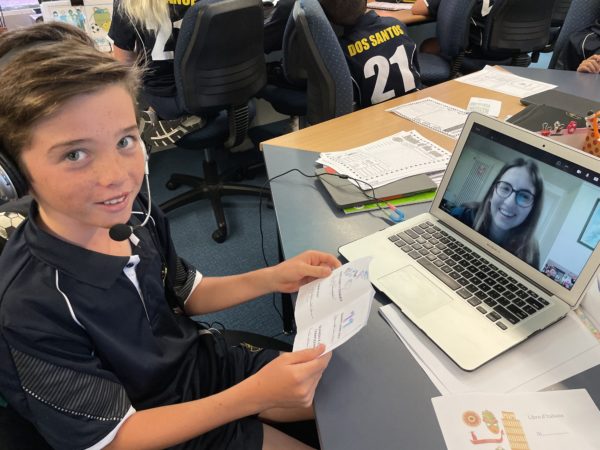Best Tips To Selecting Italian Primary Teaching Materials
Wiki Article
What Materials Do Italian Primary And Nursery Schools Require To Teach?
A primary or nursery Italian school will need several teaching resources in order to help students develop and learn. Here are some materials that you might need: Textbooks/workbooks: These books are essential for teaching of the core subjects such as Italian language, mathematics and science.
Supplies for art and crafts Students can make use of these supplies to make their own creative projects. They may comprise crayons, pencils or markers, paints and brushes.
Puzzles, blocks or games that use manipulatives are great to develop critical thinking and problem solving abilities.
Educational technology: Tablets, computers and other technology can be used for enhancing learning and providing additional resources to students.
Visual aids such as posters maps, charts, charts and others can help students remember and understand essential concepts.
Books: A wide selection of age-appropriate books in Italian can encourage the development of language and reading.
Musical Instruments: The use of musical instruments like xylophones, xylophones, and tambourines can aid in teaching music appreciation and rhythm.
Safety materials are necessary to ensure the safety and wellbeing of students and employees. These include emergency kits for first aid, procedures posters as well as fire extinguishers.
Equipment for sports Utilize cones, balls and other equipment to play outside. play and physical education.
Italian primary and nursery school teachers will require a vast selection of materials for teaching to provide a stimulating and active environment for their students. Read the top sostegno primaria for more examples.

What Maths Books Are Suggested For Italian Schools Of The Nursery?
Maths didactics cards may be used to introduce fundamental mathematical concepts to young children. Maths didactics cards are available in many forms. They may also include images of animals or items that represent numbers. This could make the process of learning more interesting.
Shape cards: Shapes cards are a great way to teach children the names and features of various shapes, such as circles, squares triangulars and rectangles. They may also contain illustrations of real objects that represent each shape.
Color cards: Color cards can assist children in learning the names of colors and their corresponding shades. They may also feature images of objects that have a predominant one color, making learning more fun.
Counting cards are an excellent method to aid your child master the art of count. They may include illustrations of animals or objects that represent numbers to make the learning experience more fun.
Time cards: These cards assist youngsters to understand the concept of time, as well as the names of the days of the week as well as the month of the calendar. It is possible to use illustrations of calendars and clocks to make learning more enjoyable.
It is essential to select Maths didactic cards that are age-appropriate fun, interactive, and engaging for children who are just beginning to learn. Teachers and parents are able to make use of these cards to engage children in fun, interactive Maths activities which promote curiosity and enthusiasm in children. Take a look at the top schede didattiche matematica sostegno for blog examples.
What Science-Based Teaching Material The Need For Italian Nurseries?
Science teaching material support can be beneficial in Italian nurseries to help children of all ages explore and learn about the world that surrounds them. Here are examples of what supports for science-related materials might be required. Curriculum and lesson planning: A well designed plan of instruction and curriculum that incorporates ideas from science can assist children in learning about a broad range of scientific concepts and skills.
Manipulatives & visual aids: Visual aids such as posters, diagrams, and natural specimens and even simple science experiment kits as well as magnifying lenses can assist students learn about science concepts through doing the work themselves.
Videos and books. Videos and books that are based on topics such as weather or animals, plants and even space, can give children additional sources and aid in learning.
Outdoor learning areas like gardens and playgrounds, for example can provide children with opportunities to explore and learn about the natural world.
Participate with parents in the process of learning Involving parents in the learning process helps reinforce the concepts taught in nursery. This also promotes the involvement of families.
Assessment tools. These tools help teachers and parents monitor the progress of their students and pinpoint areas that need to be addressed.
It is essential to ensure that the science-based teaching materials that is provided is suitable for the age of the children. Teachers and caregivers can to utilize these resources in order to develop exciting, interactive science projects for children, which will encourage their curiosity and enthusiasm for education. Follow the recommended schede didattiche scienze sostegno for blog info.

What Geography Teaching Materials Do Italian Nurseries Need?
Italian nurseries employ geography-related materials to teach children about different cultures, environments and countries. Here are a few examples of potential geography teaching tools Maps. Maps can be used to aid children understand geography, including the features of geography in different regions and countries.
Globes help children to visualize the earth's surface and also educate about the continents as well as the oceans.
Images and videos: Photos and videos of different locations and people from all over the world can aid children understand diversity and different ways of living.
Books: Books featuring different cultures and places will help children develop an interest in the world of geography and an awareness of curiosity about the world.
Natural substances. Materials like shells and plants are ideal for teaching children about ecosystems.
Field trips. Field trips can be an ideal opportunity to provide your kids with authentic experiences, and also an opportunity to educate them about geography.
Choose geography teaching materials which is appropriate for your young age group and that are sensitive to cultural differences. They can be utilized by teachers and caregivers to create interactive and engaging geography-related activities. This can stimulate children's curiosity about the world as well as their passion for learning.

